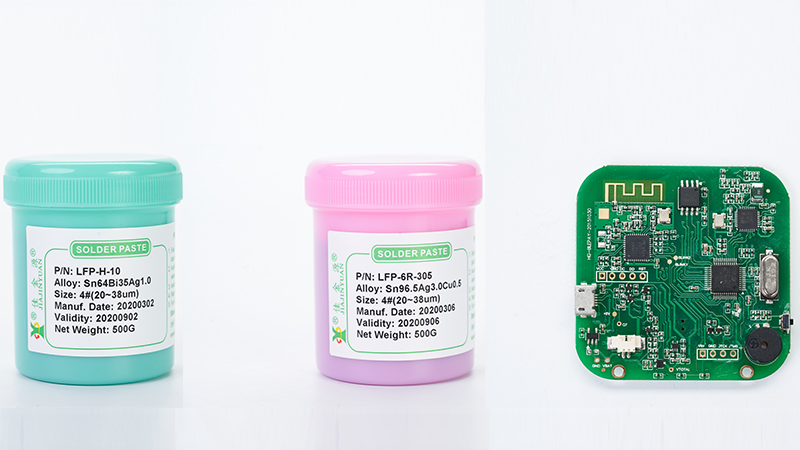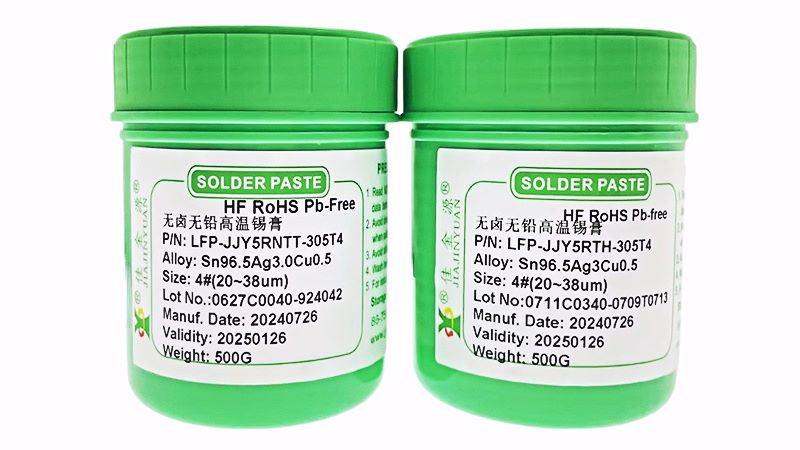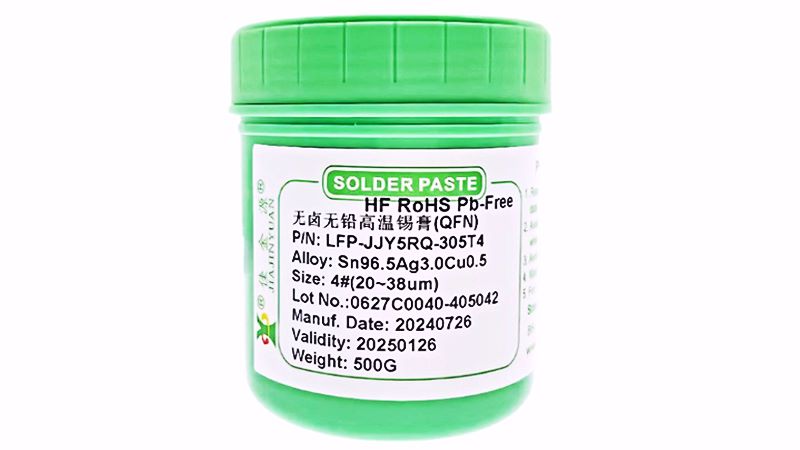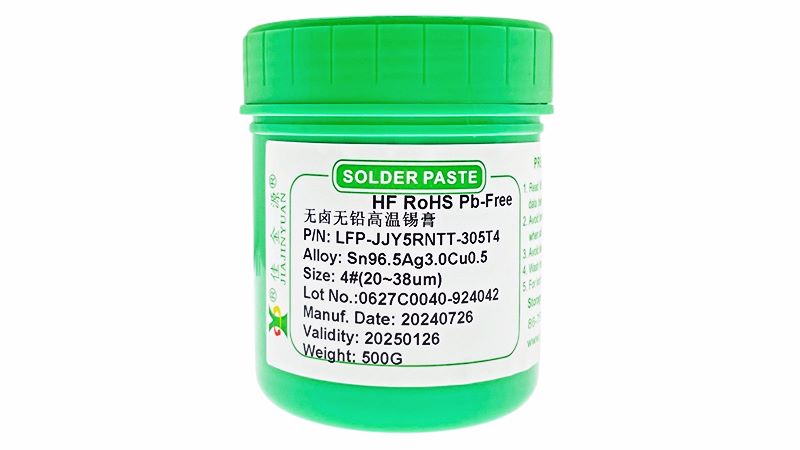Generally, manufacturers engaged in the electronics industry are quite clear that solder paste is always presentSMTIt emerged as a result of development1A new type of welding material, generally it isSMTThe main consumables in the processing industry are generally clear. Solder paste is generally divided into two types: lead-free solder paste and solder paste. What are the differences between these two types? Do you know? Below, the solder paste manufacturer will explain it to everyone:

What are the differences between them? Let's get to know them.
1From the definition:
①Lead-containing solder pastes are all composed of a mixture of alloy components and soldering flux components. Among the alloy components it occupies, lead and tin are the main components, and thus it is called leaded solder paste.
②Lead-free solder paste It is mainly composed of silver, tin and copper3It is partially composed, with silver and copper replacing the original lead component.
2Classified by characteristics:
AWhen leaded solder paste is printed continuously, its viscosity changes very little. The operational life of the steel mesh is long. It will not dry out even after more than twelve hours and still maintains a good printing effect.
BLeaded solder paste It remains in its original shape for several hours after printing, with almost no sagging phenomenon, and the surface mount components are not so prone to deviation.
CLeaded solder paste printing has good desoldering and rolling properties, and is as low as0.4mmThe pitch pads can also achieve beautiful printing.
DLeaded solder paste can meet the requirements of different grades of soldering equipment. It does not need to be completed in a nitrogen-filled environment and still shows good soldering performance within a wide reflow oven temperature range,Use heating up---Insulated type or Stepwise heating type 2All types of furnace temperature setting methods can be used.
ELeaded solder paste It has excellent welding performance and can exhibit appropriate wettability in different parts.
FLead-containing solder paste leaves very little residue after soldering, has a very light color and a relatively high insulation resistance, and will not corrodePCBIt can meet the no-wash standard ;
GLeaded solder paste can be used for through-hole roller coating.
HLeaded solder paste It has betterICTTest the performance and there will be no misjudgment.
The inspection and repair of solder joints after lead-free solder paste soldering should be easy.
1The tensile strength, ductility, toughness and creep resistance of the solder joints soldered with lead-free solder paste should all be approximately the same as those of tin-lead alloy.
2The electrical conductivity and thermal conductivity after lead-free solder paste soldering should both be consistent with63/37Tin-lead alloy solder is close to each other.
That's all.Lead-free solder pasteThe difference between lead-free solder paste and leaded solder paste is not significant in essence. They have different uses. Nowadays, lead-free solder paste is more commonly used in many industries, but it is slightly more expensive. This still depends on your choice.
We welcome both new and old customers to call for inquiries about our solder paste products. Our products offer high cost performance and come in a wide variety of models. We can also meet your needs according to your requirements.





 Tel:+86 0755 88366766
Tel:+86 0755 88366766 Phone:+86 18938660310
Phone:+86 18938660310 Email:sales@jjyhanxi.com
Email:sales@jjyhanxi.com Address:13/F,12/F, Building No. B,Qinghu Technology Park,Qingxiang Rd.,Qinghu Community, Longhua Subdistrict,Longhua District,Shenzhen City,GUANGDONG Province,P.R.C.(518027)
Address:13/F,12/F, Building No. B,Qinghu Technology Park,Qingxiang Rd.,Qinghu Community, Longhua Subdistrict,Longhua District,Shenzhen City,GUANGDONG Province,P.R.C.(518027) Guangdong Public Security Backup 44030902002666 name
Guangdong Public Security Backup 44030902002666 name
 WeChat
WeChat WeChat official account
WeChat official account
